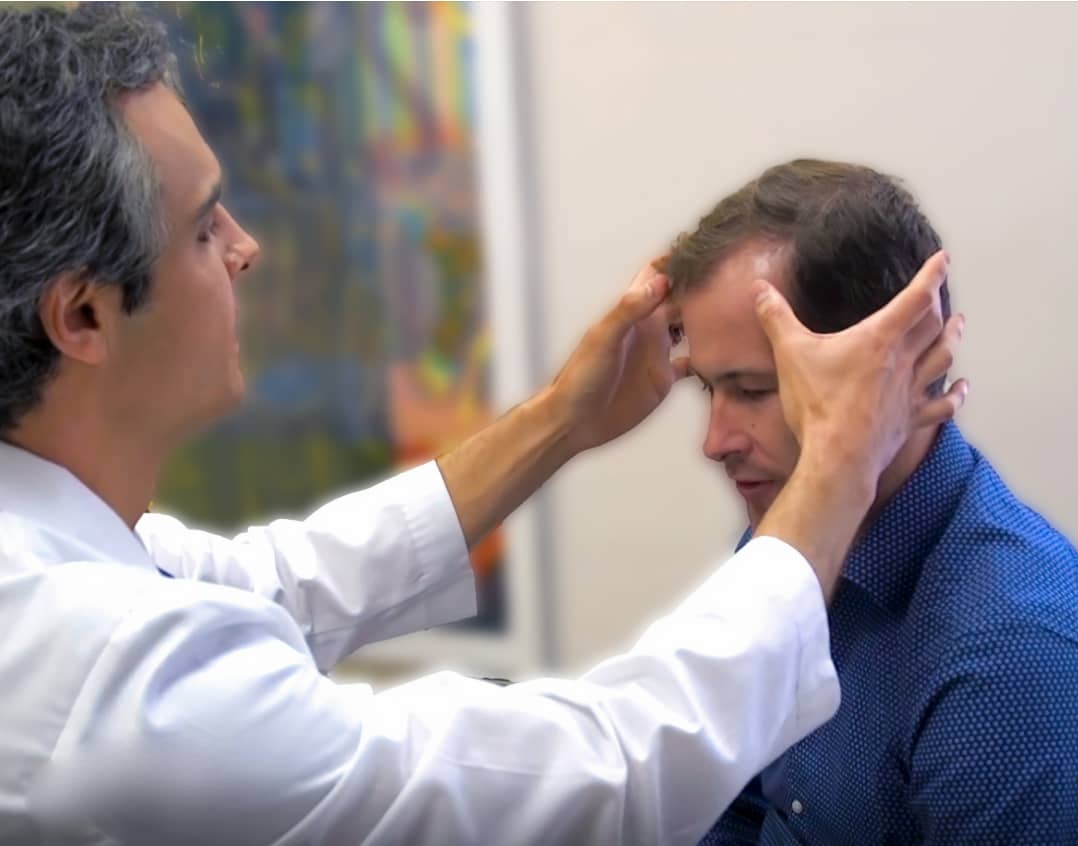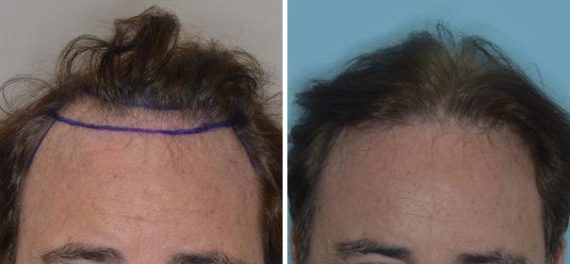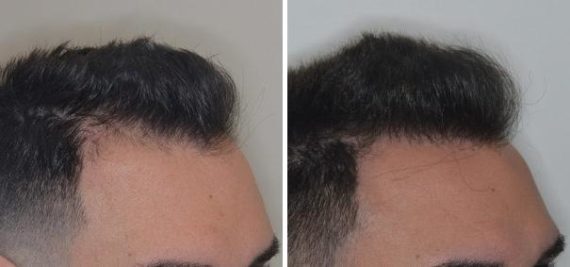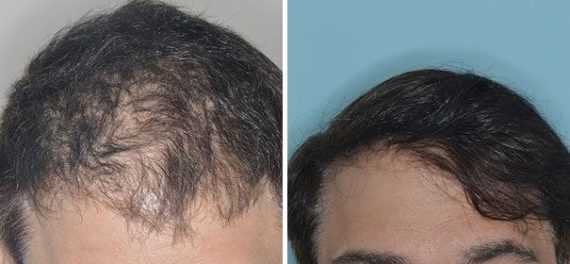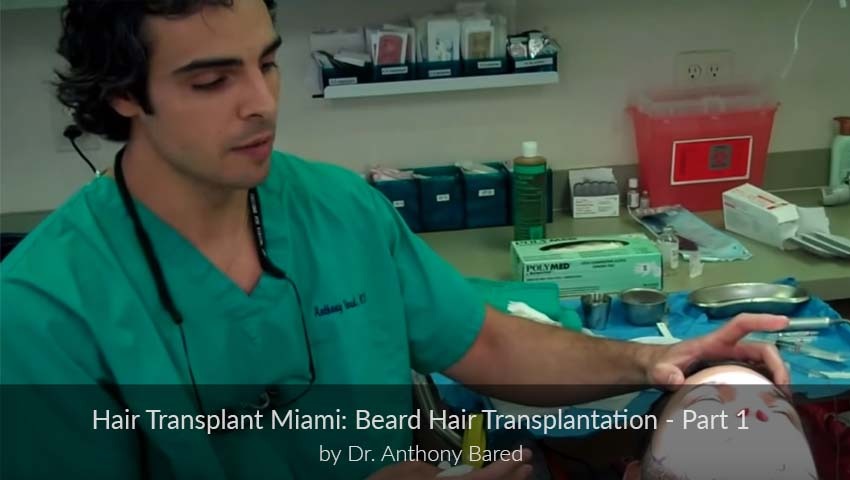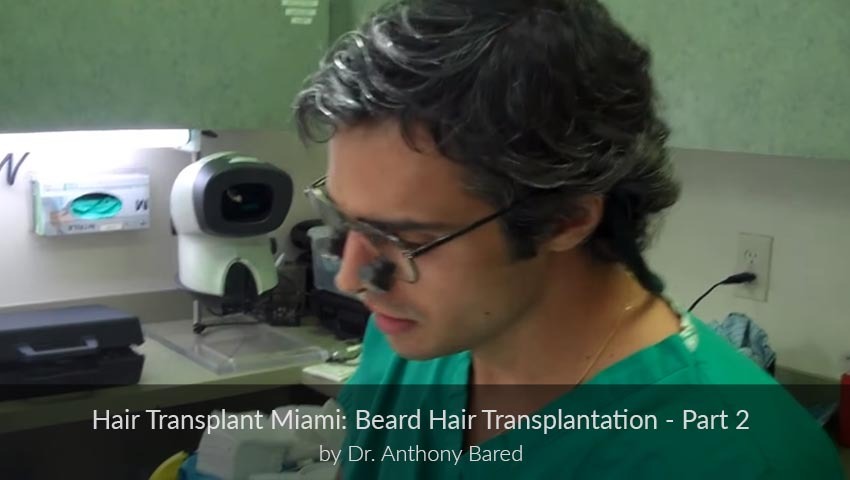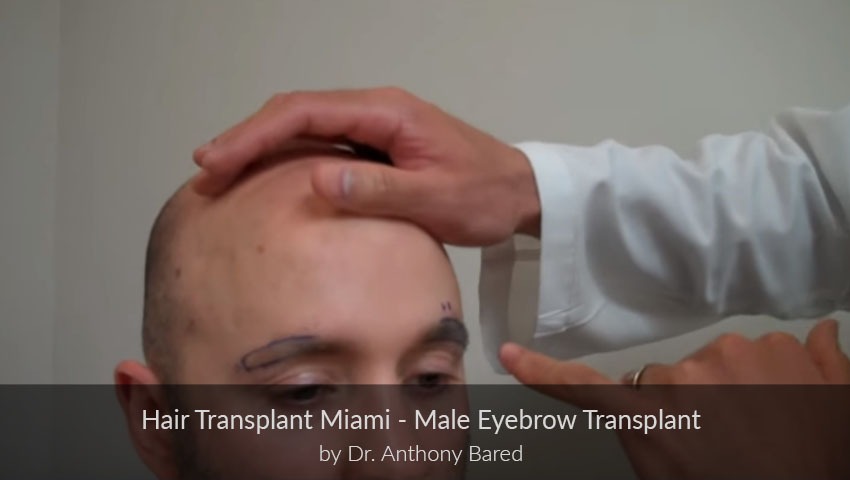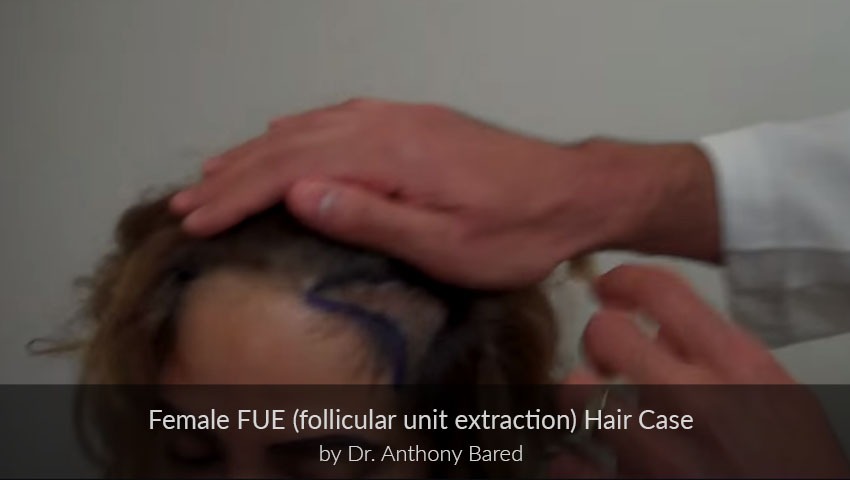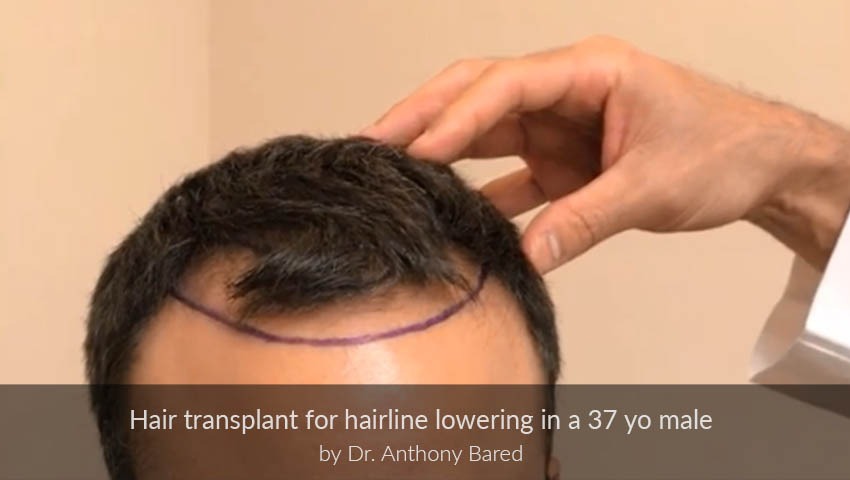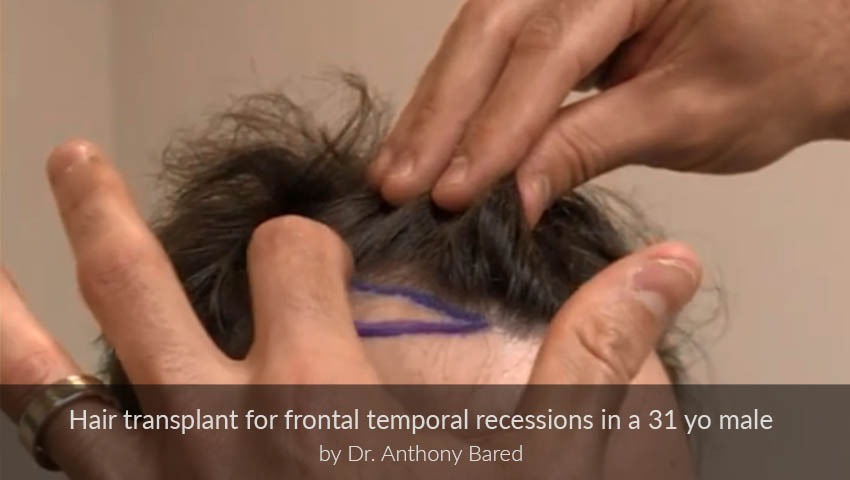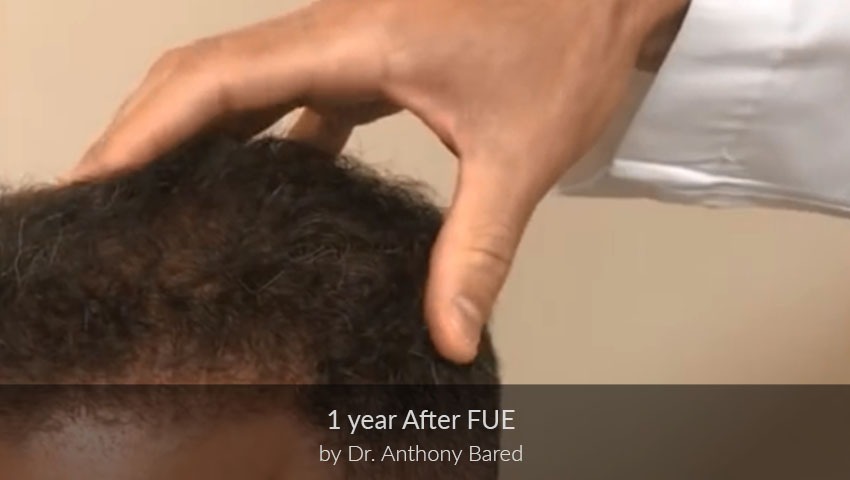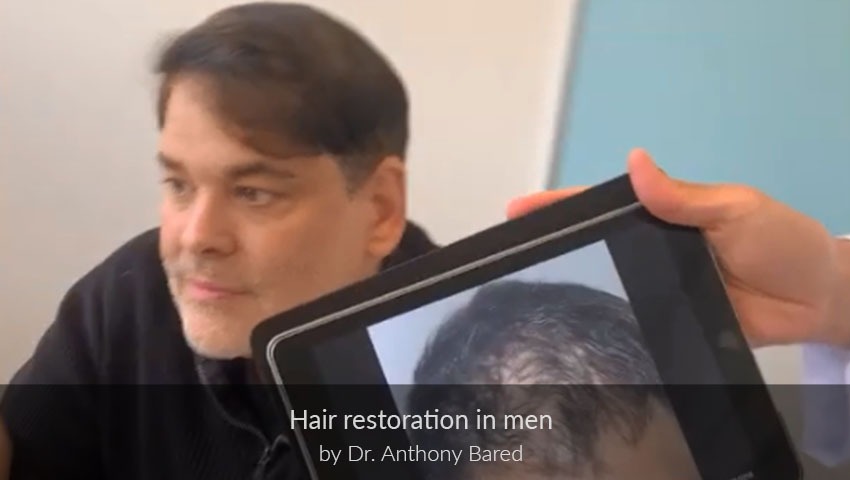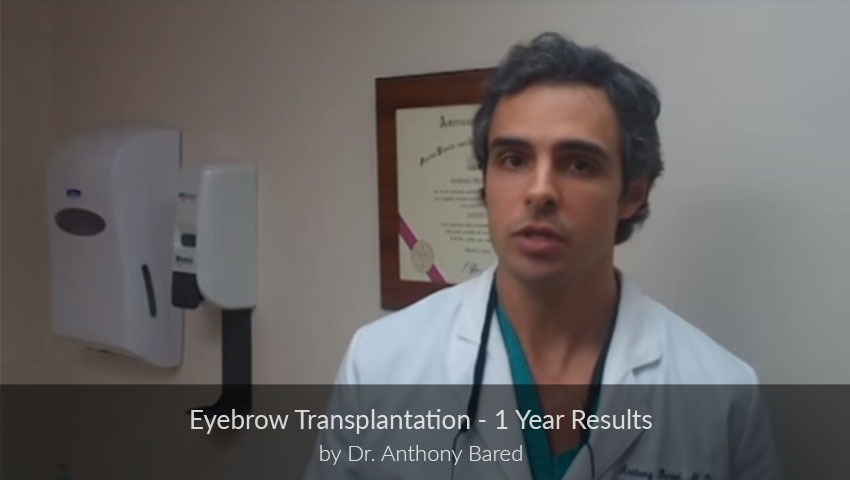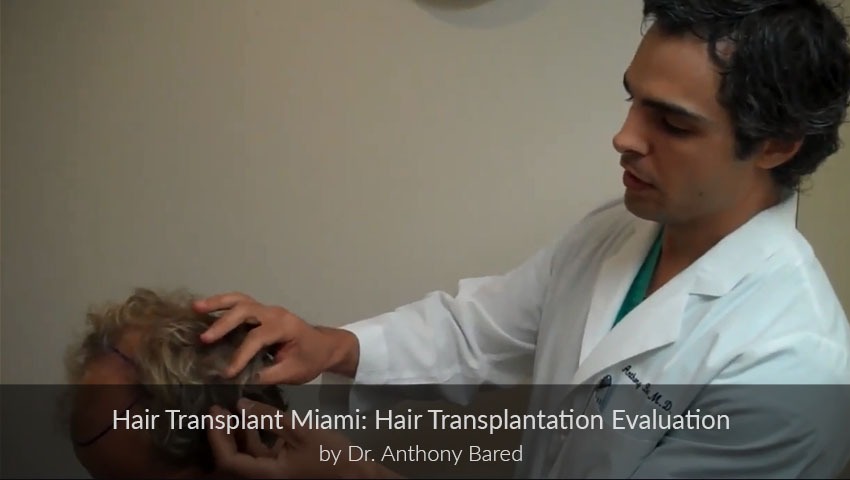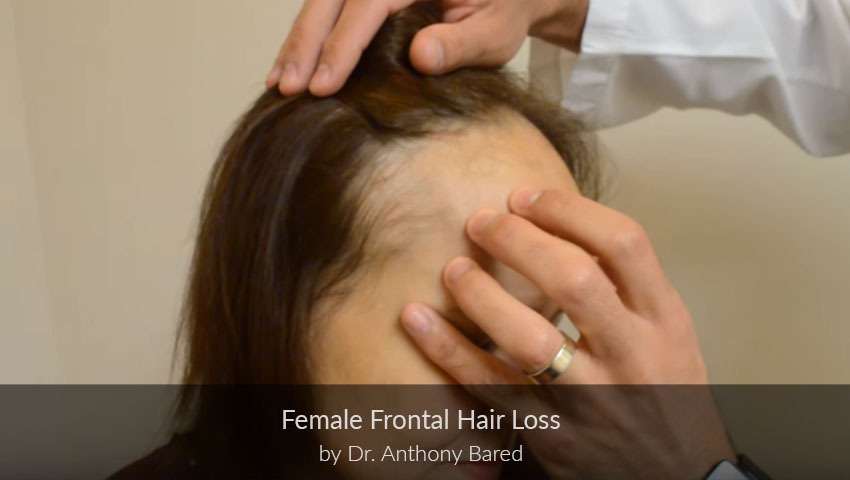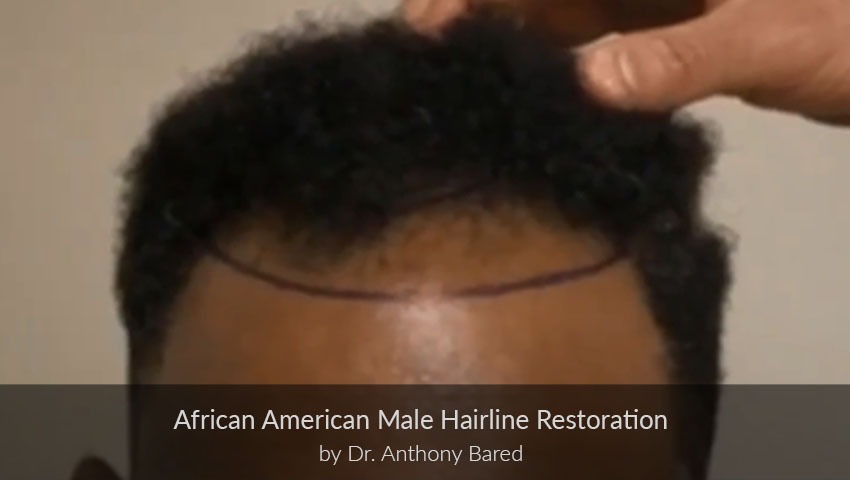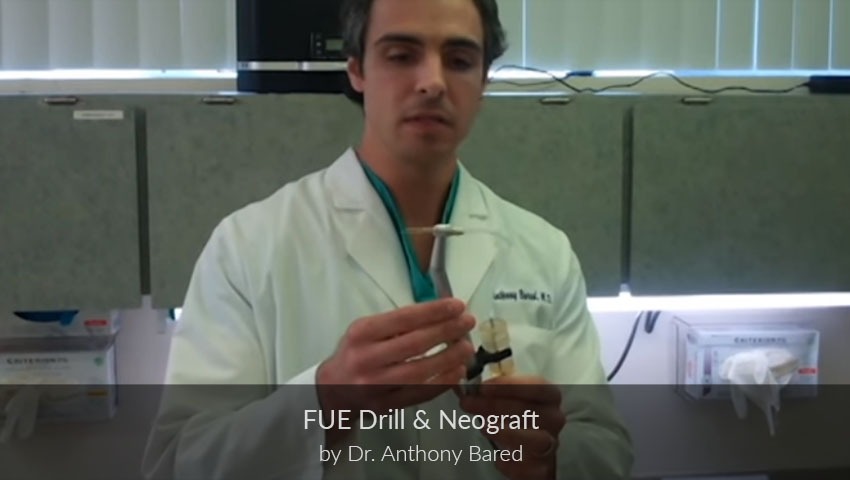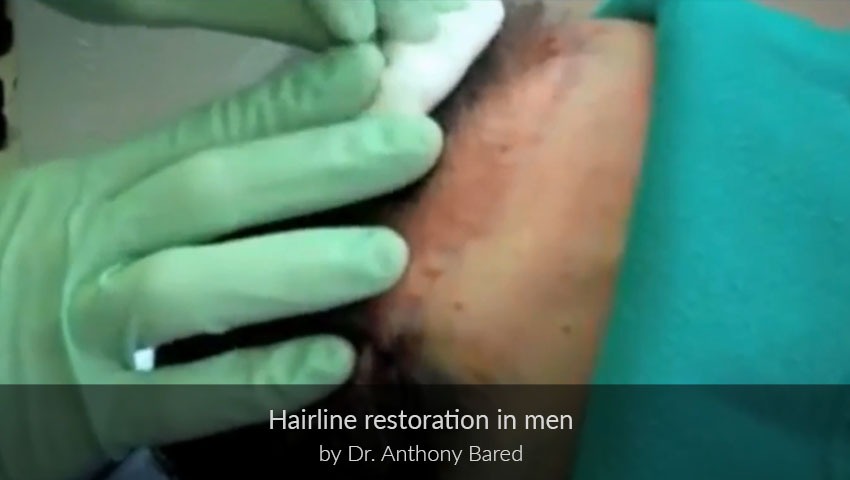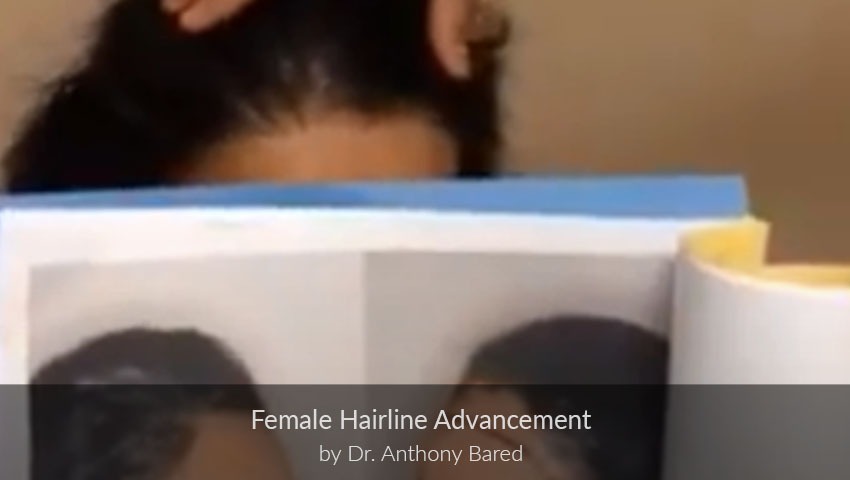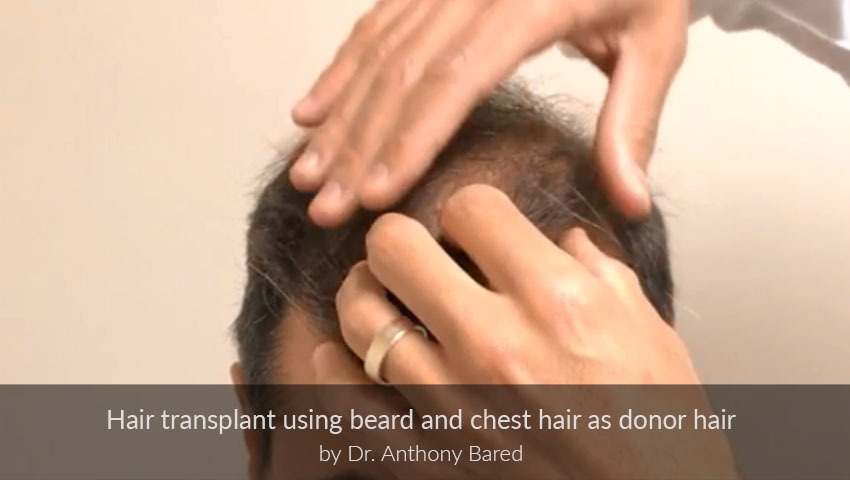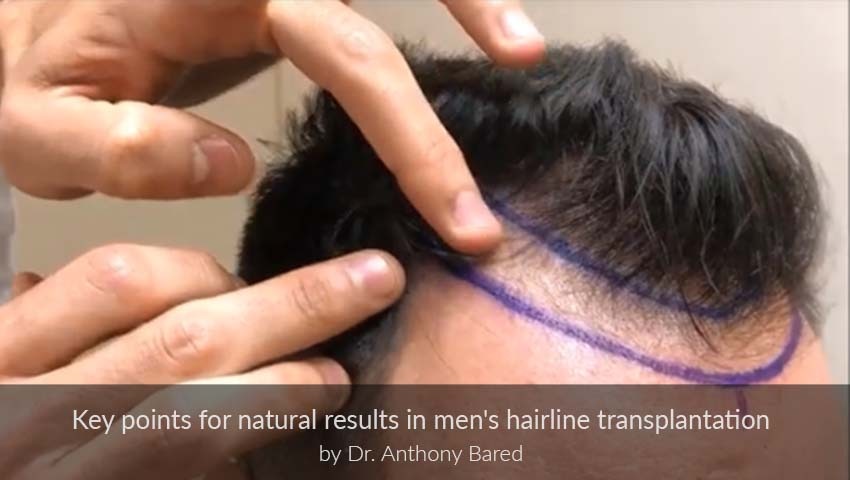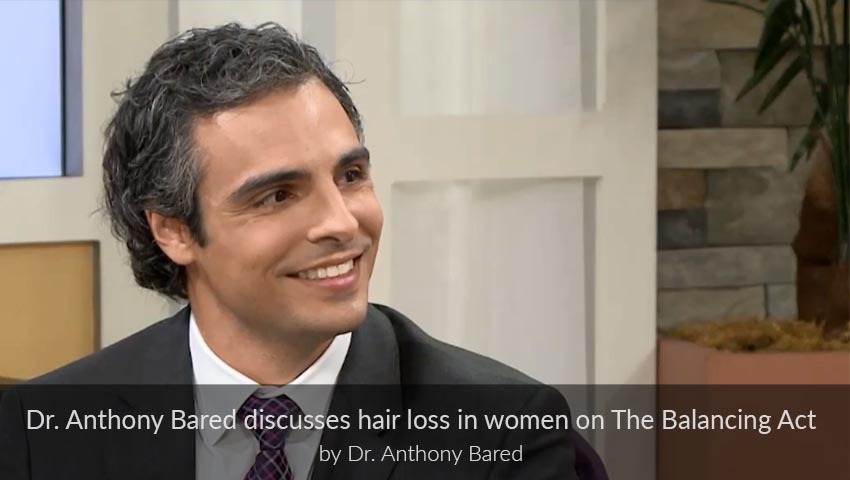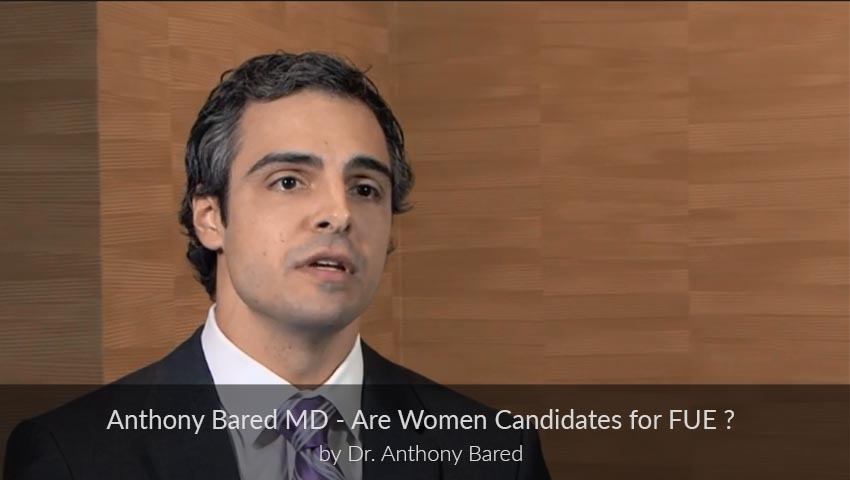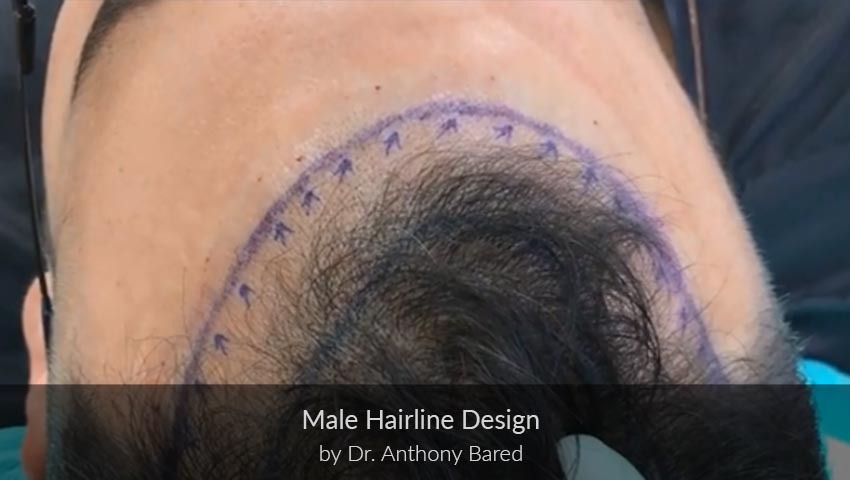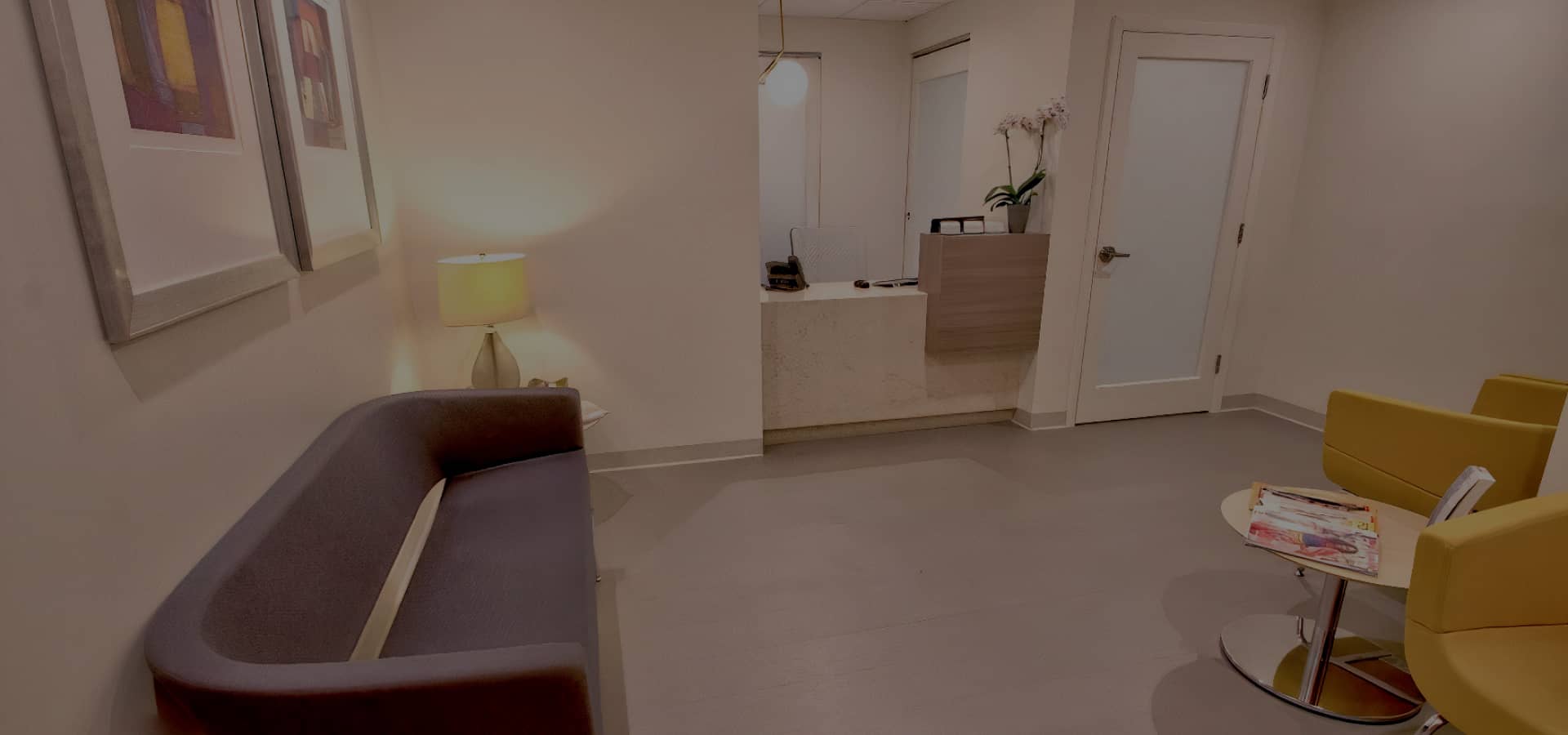Discover the Benefits of Hair Transplant Renewal
Balding and thinning hair can profoundly impact one’s self-esteem. Thankfully, hair transplants offer a transformative solution, restoring not just hair but confidence and a sense of youthfulness. Delve into the unparalleled benefits of this revolutionary procedure.
Restored Confidence
No more hats or cover-ups. Flaunt your natural hair with pride every day.
Natural Appearance
Say goodbye to artificial solutions. Hair transplants give a seamless, authentic look that’s indistinguishable from your original hair.
Permanent Solution
It’s not a temporary fix.
Cosmetic neck surgery improves the lower face by lifting and firming the jawline, removing jowls, transforming a turkey wattle, removing the fat deposits that create a double chin, and firming the neck.
Professional affiliations & contributions
Miami Hair Transplant Surgery to Regain Real and Natural Growing Hair
Anthony Bared, M.D., F.A.C.S., is a board-certified plastic surgeon and hair transplant specialist from Miami, offering a range of hair restoration procedures to men and women who are struggling with hair loss in South Florida. Renowned for delivering some of the best hair transplant outcomes, Dr. Bared utilizes advanced techniques to ensure natural-looking results for his patients.

Causes of Hair Loss
Hair loss can be caused by multiple factors.
- Primary Cause of Hair Loss: 80% of hair loss cases are hereditary, inherited from either the mother’s or father’s side.
- Individual Variation: The onset age and progression rate of hair loss differ for each individual.
- Common Type: Androgenic alopecia is the most frequent cause of hair loss, affecting both men and women.
- Treatment Challenge: As most hair loss is genetic, addressing the root cause is not possible (we can’t alter genetics).
Therefore, hair restoration is often the best option.
Before seeking a hair transplant in our Miami offices for hair loss, it is important to undergo a hair transplant evaluation by a medical professional to ascertain the cause of your hair loss.
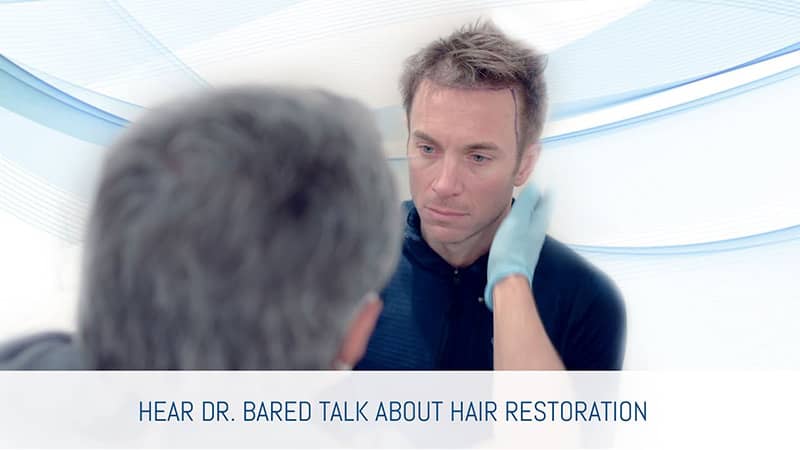
Certain hair loss conditions may disqualify patients from having a hair transplantation procedure. You should be carefully evaluated for these conditions before pursuing a possible hair transplant in South Florida. If you are found to have one of these conditions, Dr. Bared will discuss your hair transplant options with you.
What is a Hair Restoration Surgery?
There are two goals to hair restoration: to stop or slow down the progression of hair loss and to replenish hair in the areas where hair loss has occurred.
These outpatient procedures involve taking hair follicles from areas of a patient’s head or body that are resistant to hair loss (typically hair from the sides and back of the head and/or body hair) and using them to restore areas of hair loss. Once the hairs are transplanted, they become established in the new site and create normal hair growth long-term.
Hair transplant surgery has come a long way in the last few decades and today provides patients with natural-looking results that are often permanent. Skilled surgeons like Dr. Bared can even restore hair in small areas like the eyebrows.
Why Choose Hair Restoration Surgery?
Topical hair loss solutions can sometimes slow down the progression of hair loss, but many patients will eventually need a transplantation procedure to see satisfactory hair restoration results. Many patients are amazed that they can achieve a full, thick head of hair through one of Miami’s best hair transplant surgeons, Dr. Bared.
Patients choose hair transplants for many different reasons. However, most people who move forward with the procedure do so because they feel self-conscious about their hair loss and want to boost their confidence and quality of life. Many are frustrated with their lack of results from non-surgical treatments and want a long-term solution that works.

Call today to schedule your consultation
Hair Transplant Techniques
The Follicular Unit Grafting (FUG or FUT) technique is also more commonly known as the “strip” technique. It is an older method of hair transplantation that is used less frequently these days now that the less invasive FUE hair transplant has been developed. However, it can be a better option for some patients.
The Follicular Unit Grafting Technique (FUG)
The Follicular Unit Grafting (FUG or FUT) technique is also more commonly known as the strip method. It is an older technique of hair transplantation that is used less frequently these days now that the less invasive FUE hair transplant has been developed. However, it can be a better option for some patients.
In the “strip” technique, the donor hair is removed through an incision in the back of the scalp. The length of the incision is determined by the quality of the donor hair as well as the total number of grafts to be transplanted. As one of the best hair transplant surgeons in Miami, Dr. Bared has extensive experience in using the trichophytic closure technique, which allows the hair follicles to grow through the incision and minimizes the appearance of the scar. Longer hairstyles will also conceal the linear scar.
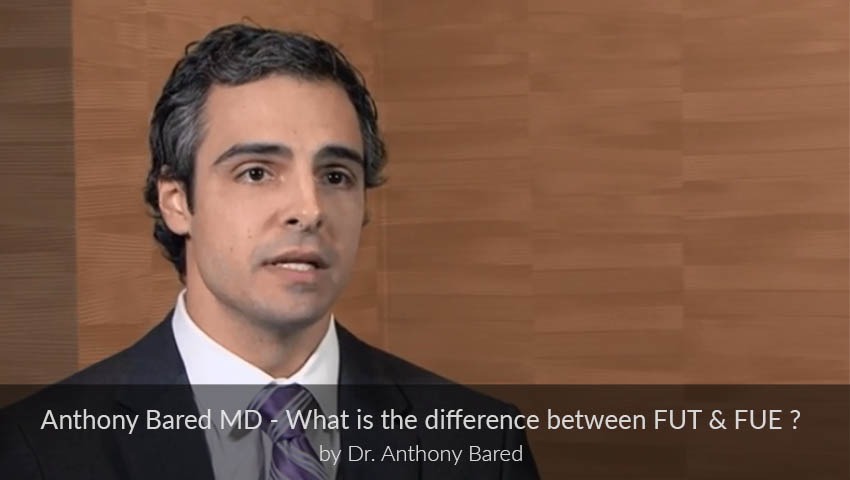
Patients who choose this hair transplant method typically want to maximize the number of grafts for a procedure while not desiring to buzz their hair. Typically, these are patients who wear a longer hairstyle (greater than 1” to 1 ½”). Patients having smaller procedures (for instance, eyebrow restoration) often elect to have the FUG procedure as well.
The Follicular Unit Extraction Technique (FUE)
Follicular Unit Extraction (FUE) is a method of harvesting donor hair for a hair transplant without the need for a large incision. This advanced procedure is known for causing minimal discomfort to patients. Individual hair follicles are the natural groupings of hairs as they exit the scalp. These small hair grafts are removed individually with a tiny handheld drill (0.8 mm to 1 mm size drill bits) from the donor area, eliminating a visible scar. This allows patients to wear even the shortest hairstyles following hair replacement.
Advancements and Variations in FUE
FUE extractions are typically performed around the back and sides of the head. FUE also allows the use of body, chest, and beard hair for patients who have fewer scalp donor hairs (such as those who have had previous procedures).
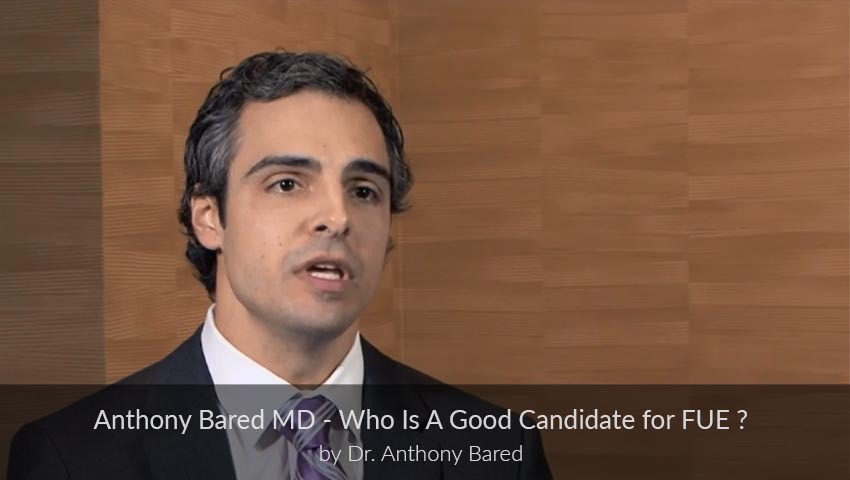
This technique has become the gold standard in hair restoration over the last few years, and many of our Miami patients looking for hair loss treatment appreciate their choices in hairstyles after undergoing a FUE hair transplant. For example, NEO Graft is an advanced hair transplant technology that leverages the follicular unit extraction technique (FUE).
The downside of FUE for some patients is that the hair must often be buzzed very short to be able to obtain sufficient grafts for the procedure. However, Dr. Bared is one of the few surgeons offering a “hybrid procedure,” allowing some FUE patients to gain the benefit of the technique without shaving their scalp.
When fewer grafts are needed, the “no shave FUE” method may be an option. Instead of shaving the hair entirely, “tunnels” can be made within the longer hair. This allows for the concealment of the donor area while utilizing the FUE technique.
Hair Transplantation Outcomes
Before & After Photos
Each patient is unique and individual results may vary*.
Who is a Candidate for Hair Transplant?
Ideal candidates for hair transplantation are men and women in good health who are already taking measures to help slow down the progression of their hair loss. To be considered a good candidate for hair transplant in South Florida with Dr. Bared, patients should not be actively shedding hair and should understand how factors like their hair color and type can influence the procedure’s nuances. Once a person’s hair loss has stabilized, and these characteristics are considered, their results are likely to be permanent following a hair restoration procedure.
Although there is no strict cut-off age for when one can undergo a hair transplant, it is Dr. Bared’s practice to defer younger patients, encouraging the medical management of their hair loss until it has stabilized. Understanding how different hair types respond to treatment is essential, especially for younger patients. Dr. Bared adopts this approach because he feels it is in the best interest of his young patients. While they may benefit from a fuller appearance for some time, hair loss will inevitably progress.
To find out if you are a good candidate for FUE or FUG hair transplant, schedule a consultation with Miami hair transplant specialist Dr. Bared at his office to discuss your cosmetic goals.
Your Hair Transplant Consultation with Plastic Surgeon Dr. Bared
1. Initial Consultation and Assessment
Dr. Bared personally meets with each patient for a hair transplant consultation in Miami. For those unable to visit in person, consultations can also be conducted via phone or webcam, especially for out-of-town patients. During this initial meeting, Dr. Bared will review the patient’s medical history, family history of hair loss, and any current methods being used to slow hair loss progression. He also discusses the patient’s aesthetic goals for the cosmetic procedure.
2. Scalp Examination and Procedure Planning
Dr. Bared conducts a thorough examination of the patient’s scalp and assesses the quality of donor hair. Based on this assessment, he provides recommendations on how to potentially slow down hair loss progression. Suppose the patient is deemed a suitable candidate for hair transplantation. In that case, Dr. Bared discusses options for donor hair harvesting, utilizing his expertise in both FUG and FUE hair transplant procedures to recommend the best approach for the patient’s specific needs.
3. Procedure Customization and Setting Expectations
The consultation also involves determining the number of grafts needed to achieve the patient’s desired results. Factors like the availability of donor hair and the chosen harvesting method influence this decision. To set realistic expectations, Dr. Bared may show before-and-after photos of previous Miami patients. Patients are encouraged to review hair transplant reviews before their appointment and come prepared with any questions or concerns, allowing Dr. Bared to address them comprehensively.
Preparing for the Hair Transplant Procedure
Very little preparation is required for hair transplant patients in South Florida. If you are a smoker, you should quit for at least several weeks before and after the procedure to help ensure optimal results. You may also need to temporarily stop taking some medications and supplements as directed by our staff.
On the day of the procedure, you should eat a light breakfast before coming to the office. Someone should drive you to and from the procedure, especially if you will be receiving sedation.
The Hair Transplantation Procedure
Dr. Bared’s hair transplantation process is a detailed and patient-focused procedure, ensuring both comfort and precision at every step. From the initial consultation to post-operative care, the procedure is meticulously designed to achieve the best possible results with a natural look.
Pre-Procedure
The journey to hair restoration begins with a thorough consultation and careful planning.
- Initial Meeting: Consultation with Dr. Bared on the procedure day.
- Preparation: Hairline or transplant areas are marked and shown in a mirror for approval. Hair shaving depends on the chosen technique.

Procedure Steps
- Anesthesia: Option for an oral sedative, followed by local anesthesia to the donor areas.
- Technique-Specific Steps:
- FUE Method: Patient lies face down for initial hours for graft extraction.
- Strip (FUG) Method: Shorter incision process with possible alternative anesthesia.
- Grafting Process: Meticulous creation of small incisions in recipient sites. Transplantation of follicular units into these sites, with back-and-forth repetition until completion.
- Quality Control: Each graft is examined under a microscope for quality and counted.

Patient Experience During the Procedure
Dr. Bared’s team ensures a comfortable and engaging experience throughout the procedure.
- Comfort Measures: The office provides iPads for entertainment, allows for restroom breaks, and offers lunch.
- Procedure Duration: The length of stay in the office depends on the number of grafts being transplanted.

Post-Procedure
Aftercare is a crucial part of the hair transplantation process, ensuring optimal results.
- Instructions: Detailed written post-operative guidelines were given and reviewed.
- Follow-Up: A next-day visit is available for the first hair wash and technique review, or patients can perform the hair wash at home using the provided instructions.
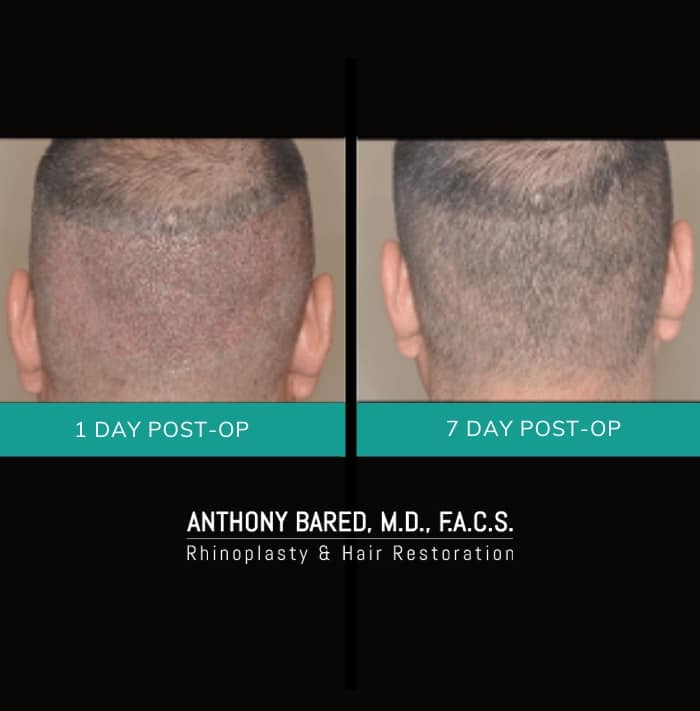
Preparation and Consultation
In-Depth Procedure
Patient Experience
Post-Procedure Care
Recovering from Hair Transplant Surgery
Healing Timeframes and Expectations
After undergoing a hair transplant in South Florida, patients should expect varying healing times. Generally, it takes about a year to see the full results of the procedure. Specifically, the donor area, from where hair is taken, typically heals within 3 to 15 days, depending on the specific hair transplant technique used and individual healing rates. Similarly, the recipient area, where the hair grafts are placed, usually heals within approximately 5 days. However, the presence of crusts over the recipient sites may last longer, varying with the site of the transplant, such as the scalp, eyebrows, or beard.
Immediate Post-Surgical Care
During the initial phase of recovery, patients are advised to apply antibiotic ointment to the donor area to aid in healing. Sleeping habits also play a crucial role in this phase. It’s recommended to sleep with the head elevated for the first week following the surgery, as this helps in reducing swelling. Additionally, using a travel pillow while sleeping can relieve some pressure from the back of the head, particularly around the donor site, enhancing comfort and aiding in the healing process.
Hair Growth and Long-Term Recovery
A noteworthy aspect of the recovery process is the hair growth cycle post-transplant. Initially, the transplanted grafts tend to fall out within a few weeks, entering a dormant phase where no hair growth is observed for several months. This phase is a normal part of the recovery and should not cause alarm. Subsequently, around four to six months after the surgery, the transplanted hair begins to regrow. This is when patients can start to see the results of their transplant, with full results typically visible around a year after the procedure.
Hair Transplant Videos
Each patient is unique and individual results may vary*.
Hair Transplant Side Effects and Possible Risks
Overall, hair transplants in Miami with Dr. Bared are very safe. However, all surgical procedures carry at least minimal risks. Hair transplantation is associated with the following risks and side effects:
- Infection
- Bleeding
- Unfavorable scars
- Graft death
- Patchy hair
- Poor aesthetic outcome
Choosing a hair restoration expert like Dr. Bared and following all pre- and post-operative instructions greatly reduces the risks of a botched hair transplant.
How Much Does a Hair Transplant Cost in Miami?
Every patient wants to know the cost of hair restoration. The short answer is that it varies. The average price of the procedure is influenced by the number of grafts required, the patient’s degree of hair loss, the area to be restored, and the technique that will be used. All of these affect the total hair transplant price. The surgeon will analyze your case to get an estimate of the maximum amount of grafts possible at the most affordable cost, but in any case, our staff will go over the cost per graft at the time of your consultation and discuss payment plans and financing options such as care credit with you.
But to give you an accurate cost estimate, you can expect the average cost of hair transplants in Miami to be between $5000 to $15000 depending on the degree and type of hair loss as well as the factors previously mentioned. Also, consider that since most insurance companies consider hair restoration an elective procedure, they usually don’t cover it.
Why Choose Dr. Anthony Bared
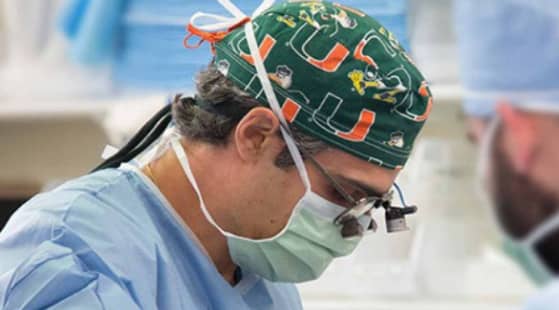
- Dr. Bared’s training was first in Otolaryngology at the University of Miami, followed by the awarding of a highly competitive fellowship by the American Academy of Facial Plastic and Reconstructive Surgery at the University of Illinois-Chicago.
- He is Double Board Certified by the American Board of Facial Plastic and Reconstructive Surgery and the American Board of Otolaryngology.
- Dr. Bared has numerous publications and has lectured at various nationwide scientific meetings.
- He also serves as a clinical voluntary Assistant Professor at the Florida International University, Herbert Wertheim College of Medicine.
Frequently Asked Questions about Hair Transplants
Last modified by Dr. Anthony Bared
